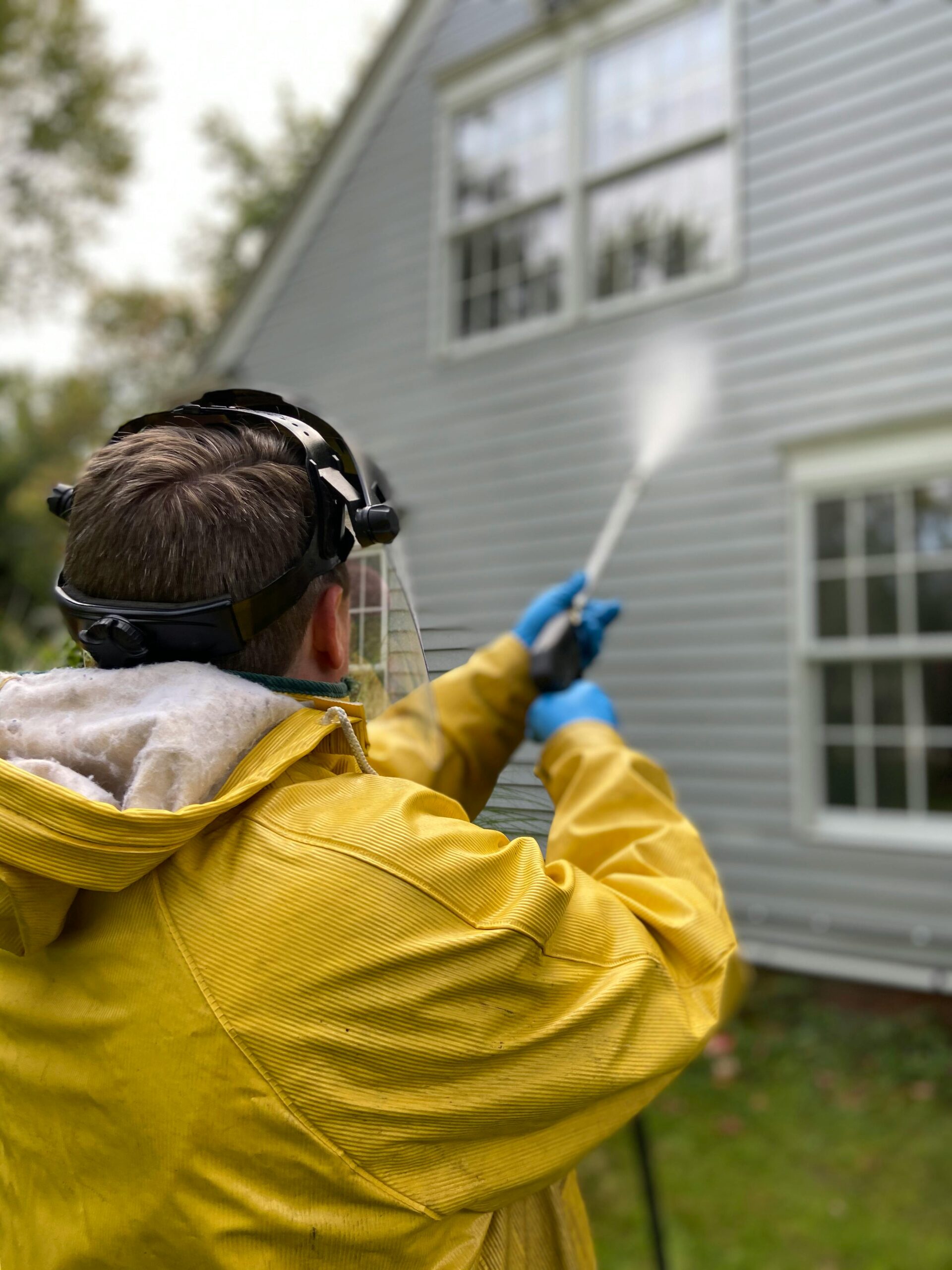Power washing, also known as pressure washing, is a highly effective method for cleaning various surfaces around your home. It can breathe new life into your property’s exterior, enhancing its appearance and prolonging the lifespan of materials. This guide will walk you through the benefits, techniques, and best practices for power washing your home.
Why Power Washing is Essential
Over time, dirt, grime, mold, and mildew accumulate on the exterior surfaces of your home. This not only diminishes curb appeal but can also cause structural damage. Power washing removes these contaminants, offering several benefits:
- Enhanced Curb Appeal: A clean exterior makes your home more inviting and increases its market value.
- Preventative Maintenance: Regular cleaning prevents the buildup of harmful substances that can cause damage.
- Health Benefits: Removing mold and mildew can improve air quality and reduce the risk of allergies.
Key Areas to Power Wash
Power washing is suitable for various parts of your home, including:
- Siding: Whether you have vinyl, wood, or brick siding, power washing your siding Helena MT can remove years of accumulated dirt.
- Driveways and Walkways: Clean driveways and walkways improve safety by removing slippery algae and moss.
- Decks and Patios: Regular cleaning helps maintain the integrity of wood and composite materials, preventing rot and decay.
- Fences: Restore the look of your wood or vinyl fence by removing stains and discoloration.
How to Power Wash Your Home
1. Preparation
- Safety First: Wear protective gear such as gloves, goggles, and sturdy shoes.
- Choose the Right Equipment: Select a pressure washer with appropriate power settings for different surfaces.
- Clear the Area: Remove obstacles and cover plants, outdoor furniture, and electrical outlets to protect them from water damage.
2. Technique
- Test a Small Area: Before starting, test a small, inconspicuous area to ensure the pressure setting is appropriate.
- Use the Correct Nozzle: Different nozzles provide varying levels of pressure. Use a wider spray for delicate surfaces and a narrower spray for tough stains.
- Keep a Safe Distance: Hold the nozzle at least 6 inches away from the surface to avoid damage.
- Move Consistently: Use a steady, sweeping motion to ensure even cleaning without streaking.
3. Post-Wash Care
- Inspect for Damage: Check for any areas that may have been damaged during the cleaning process.
- Apply Sealants or Paint: For surfaces like wood decks or fences, consider applying a sealant or paint after washing to protect against future damage.
- Clean Equipment: Rinse your pressure washer and store it properly to ensure its longevity.
Hiring Professionals vs. DIY
While DIY power washing can be rewarding, hiring professionals offers several advantages:
- Expertise and Experience: Professionals know the right techniques and equipment for different surfaces.
- Time-Saving: Hiring a service frees up your time for other important tasks.
- Guaranteed Results: Professional services often come with guarantees for a thorough and satisfactory job.
Conclusion
Power washing is a powerful tool in maintaining and enhancing the appearance of your home. Whether you choose to tackle it yourself or hire professionals, regular cleaning will keep your home looking its best and protect it from potential damage. By following the steps outlined in this guide, you can ensure a safe, effective, and rewarding power washing experience.
Ready to revitalize your home? Start planning your power washing project today and enjoy the transformative benefits of a cleaner, more beautiful property.

Leave a Reply